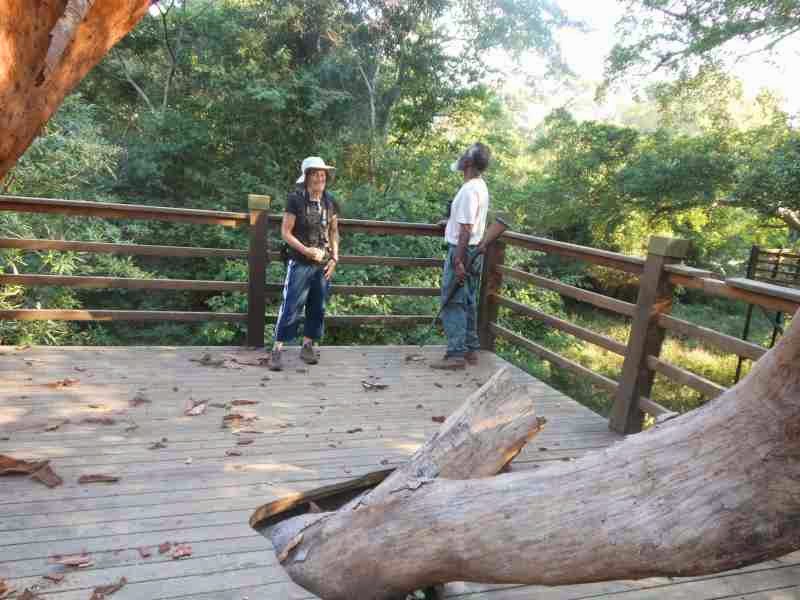The schools get 3 weeks Easter break.
We worked the 1st week finishing registering books for the
“wealthier” primary school's library and preparing some lesson
plans for the 2nd term (when we plan to get directly into
HIV and STIs, and we'd like to also do some nutrition – hate to be
the elderly white couple always talking about sex.). During the 2nd
week we went to Kwazulu-Natal, the South African province south of
Swaziland. We hired a car and a driver to meet us at the main road
near our site and drive us to the border, where the driver took
public transportation back to his home and we headed to a terrific
hilly wooded game preserve, the ancient hunting land of the Zulu
kings. Driving on the other side of the road and shifting with her
left hand were challenging for Katherine, but we are happy to report
no mishaps!
We saw wild animals
birds (brown headed kingfisher – you
should see the woodland, pied, malachite, and giant kingfishers –
this guy is drab compared to any of them, but he was close and
willing to pose)
and lovely country.
Then on to a World Heritage Site, St.
Lucia Estuary, on the shores of the Indian Ocean. Through a guide
we'd liked in our Kruger trip in February we'd located a terrific
young birding guide for St Lucia, who met us at 4:30 a.m. at the
backpackers hostel where we stayed
and walked our legs off searching for
rare, and some not so rare but we had not seen them yet, birds of the
area. This was the only rainy day, but we kept going till 2:30 – a
long day, but some great birds.
The yellow-billed horn-bill was
the smart-ass bird in The Lion King; every Swazi under 40 knows that
movie:
We also saw trumpeter and crowned
hornbills. My top prize goes to the Livingston Turaco, a green bird
with a nice white and green crest – pretty good when perched but
not so special, until he flies, when his whole under-side glows
bright red, like a church window in the afternoon sun. Just
fabulous.
And finally we stopped at uMkhuze,
another game reserve,
with a guided walk through the giant
fig tree forest
and “hides” where the birds can be
seen and animals come down to drink.
(blue wildebeest)
This is all on my little pocket
camera.
In booking this trip I had assumed
Swazi cost structure, where US $35 per night buys you the best guest
house with a veranda with a view. Doesn't go quite so far in SA; no
place we stayed had “en-suite” facilities. At our last stop that
nocturnal foray tested my spirit for adventure:
As I walked from our hut to the
communal toilet at 2 a.m. I heard grunting and growling in the
shadows. The next morning we saw hoof marks, and then large paw
prints in the sand by our hut. I figured out later, from similar
sounds I heard in daylight, that I'd heard an alpha male impala
talking to his harem. Although impala are not known to be
carnivorous, at 2 a.m. it was harder to be so sure.
More than 50 new birds on this trip.










Sometimes one must skip to the loo!!!
ReplyDeleteSounds like you all are doing great!